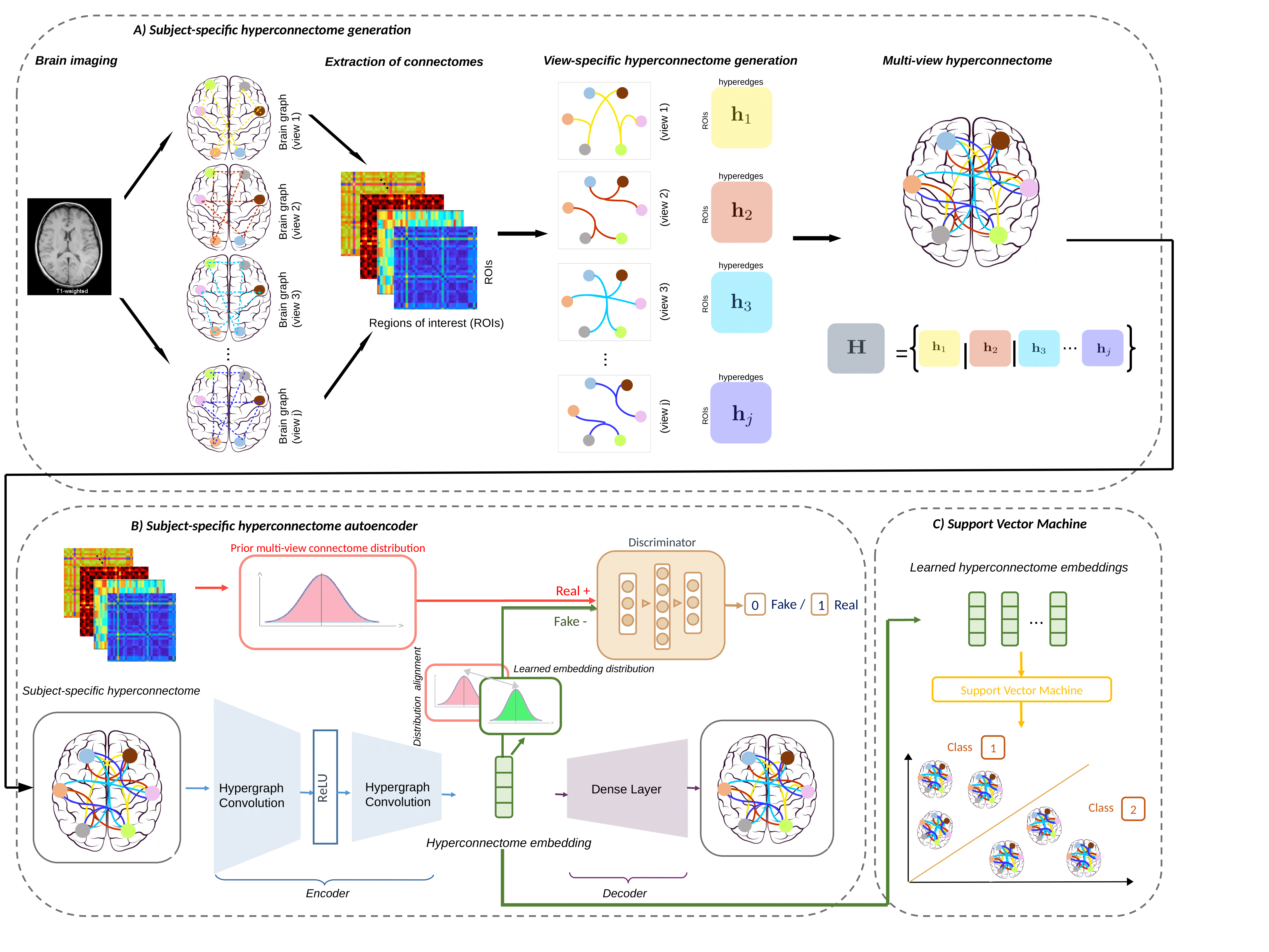Multi-View Brain HyperConnectome AutoEncoder For Brain State Classification
Graph embedding is a powerful method to represent graph neurological data (e.g., brain connectomes) in a low dimensional space for brain connectivity mapping, prediction and classification. However, existing embedding algorithms have two major limitations. First, they primarily focus on preserving one-to-one topological relationships between nodes (i.e., regions of interest (ROIs) in a connectome), but they have mostly ignored many-to-many relationships (i.e., set to set), which can be captured using a hyperconnectome structure. Second, existing graph embedding techniques cannot be easily adapted to multi-view graph data with heterogeneous distributions. In this paper, while cross-pollinating adversarial deep learning with hypergraph theory, we aim to jointly learn deep latent embeddings of subject0specific multi-view brain graphs to eventually disentangle different brain states. First, we propose a new simple strategy to build a hyperconnectome for each brain view based on nearest neighbour algorithm to preserve the connectivities across pairs of ROIs. Second, we design a hyperconnectome autoencoder (HCAE) framework which operates directly on the multi-view hyperconnectomes based on hypergraph convolutional layers to better capture the many-to-many relationships between brain regions (i.e., nodes). For each subject, we further regularize the hypergraph autoencoding by adversarial regularization to align the distribution of the learned hyperconnectome embeddings with that of the input hyperconnectomes. We formalize our hyperconnectome embedding within a geometric deep learning framework to optimize for a given subject, thereby designing an individual-based learning framework. Our experiments showed that the learned embeddings by HCAE yield to better results for brain state classification compared with other deep graph embedding methods methods.
PDF Abstract


